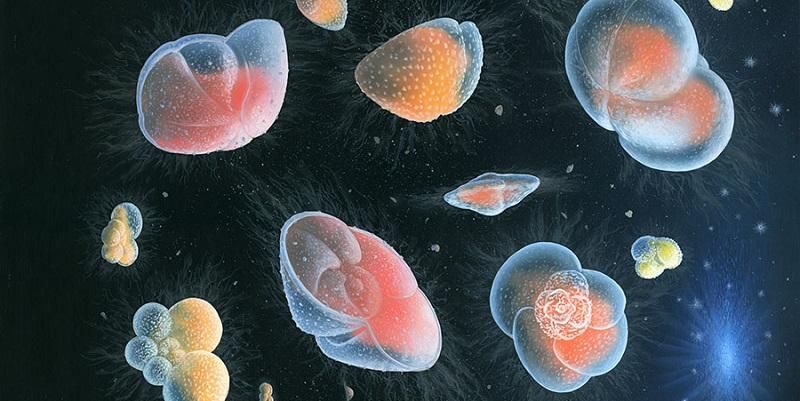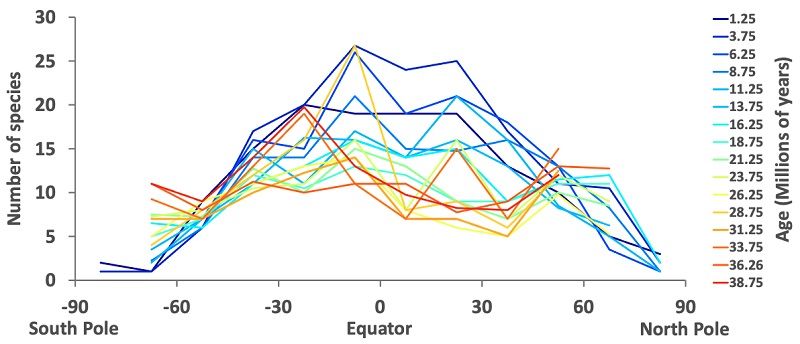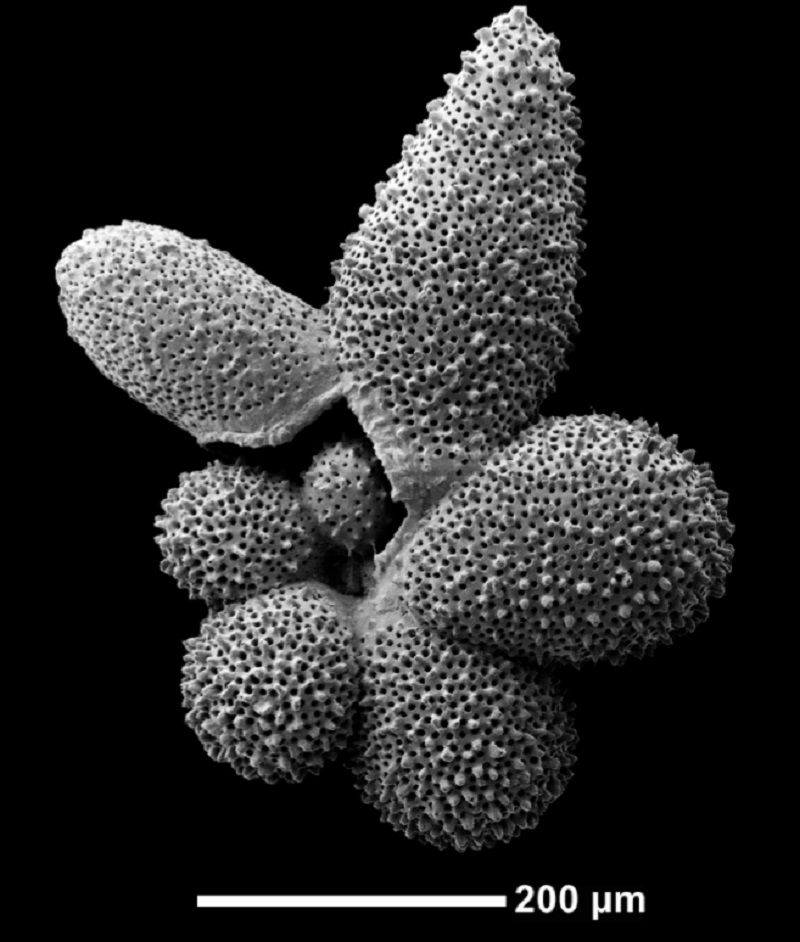
Researchers have used nearly half a million fossils to solve a scientific mystery - why the number of different species is greatest near the equator and decreases towards polar regions.
The results, published in the journal Nature, give valuable insight into how biodiversity is generated over long timescales, and how climate change can affect the richness of global species.
It has long been known that in both marine and terrestrial ecosystems, species - including animals, plants, and single-celled organisms - show what is known as a latitudinal diversity gradient, with biodiversity peaking at the equator.
Until now, limited fossil data has prevented researchers from thoroughly investigating how this diversity gradient first arose.
In this new study, researchers at the Universities of Leeds, Oxford and Bristol, used a group of unicellular marine plankton called planktonic foraminifera. The team analysed 434,113 entries in a global fossil database, covering the last 40 million years.
They investigated the relationship between the number of species over time and space, and potential drivers of the latitudinal diversity gradient, such as sea-surface temperatures and ocean salinity levels.
Dr Tracy Aze, Associate Professor in the School of Earth and Environment at Leeds and a co-author for the study, said: “Although they are small enough to fit on the head of a pin, planktonic foraminifera have one of the most complete species-level fossil records known to science.
“Our research builds on 60 years of deep-sea sample collection and the diligent counting and recording of hundreds of thousands of specimens by research scientists. It’s fantastic to be able to produce such important results about the drivers of species distributions through time and to do justice to this wonderful fossil archive.”
The key findings of the study were:
- The modern-day latitudinal diversity gradient first started to emerge around 34 million years ago, as the Earth began to transition from a warmer to cooler climate.
- This gradient initially remained shallow, until around 15–10 million years ago, when it steepened significantly. This coincided with a significant increase in global cooling.
- Peak richness for planktonic foraminifera occurred at higher latitudes from 40–20 million years ago. By around 18 million years ago, however, peak richness shifted to between 10° to 20° latitude, consistent with the diversity pattern observed today.
- There was a strong positive relationship between species richness and sea surface temperatures - both when modelled over time at specific locations, or at different locations at a specific time.
- There was also a positive relationship between species richness and the strength of the thermocline: the temperature gradient that exists between the warmer mixed water at the ocean's surface and the cooler deep water below.
Greater diversity in warmer waters
According to the researchers, these results indicate that the modern-day distribution of species richness for planktonic foraminifera could be explained by the steepening of the latitudinal temperature gradient from the equator to the poles over the last 15 million years.

This may have opened up more ecological niches in tropical regions within the water column, compared with higher latitudes, promoting greater rates of speciation.
To test this hypothesis, the researchers examined the extent to which modern species of planktonic foraminifera live at different depths within the vertical water column. They found that in low latitudes closer to the equator, species today are more evenly distributed vertically within the water column, compared with high latitudes.
This suggests that a key driver of the modern-day diversity gradient was a significant increase in the difference in sea surface temperatures between low- and high-latitude regions, and within the water column, from 15 million years onwards.
The warmer waters at the tropics were able to support a broader range of different temperature habitats and ecological niches within the vertical water column, encouraging higher numbers of species to evolve.
This is supported by the fact that the tropics today are richer than the tropics of warmer time periods in the past such as the Eocene and Miocene) when there was little or no vertical temperature gradient in the oceans.
In addition, cooling sea temperatures at high latitudes likely caused many regional populations of species to become extinct, contributing to the modern diversity gradient.

Dr Erin Saupe, from the Department of Earth Sciences at the University of Oxford and lead author for the study, said: ‘By resolving how spatial patterns of biodiversity have varied through deep time, we provide valuable information crucial for understanding how biodiversity is generated and maintained over geological timescales, beyond the scope of modern-day ecological studies.’
Study co-author Dr Alex Farnsworth, Senior Research Associate at the Department of Geographical Sciences, University of Bristol, said: ‘Understanding why species in ancient history were more diverse and plentiful nearer the equator and less so nearer the poles can give important insights how marine species, such as plankton, might respond in future.
“These tiny single-celled organisms are a vital link in the marine food chain, so studying their reactions to changing climates may help us better predict how they will likely be affected as temperatures continue to warm with the increasing onset of climate change. This has potentially large implications for marine food webs, such as fish and aquatic mammals like seals and whales, and could be used to inform future measures to protect sea life and preserve biodiversity.’
The paper - Origination of the modern-style diversity gradient 15 million years ago - is available on the Nature wesbite.
For more information
For further details, please contact David Lewis in the Press Office at the University of Leeds by email on d.lewis@leeds.ac.uk.
Top image: Depictions of present-day planktonic foraminifera floating in the deep sea. Image credit: Richard Bizley, BizleyArt